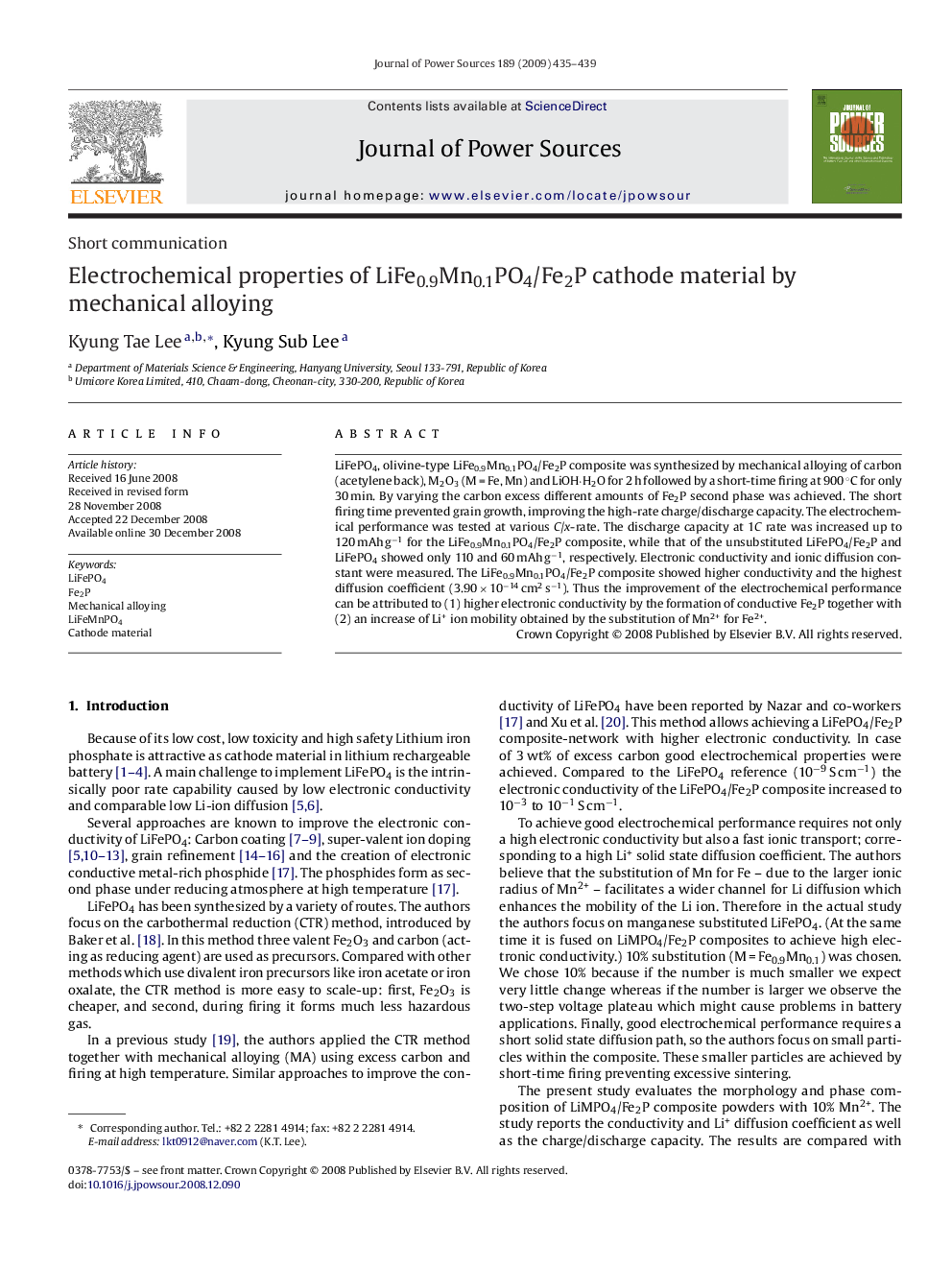| Article ID | Journal | Published Year | Pages | File Type |
|---|---|---|---|---|
| 1291207 | Journal of Power Sources | 2009 | 5 Pages |
LiFePO4, olivine-type LiFe0.9Mn0.1PO4/Fe2P composite was synthesized by mechanical alloying of carbon (acetylene back), M2O3 (M = Fe, Mn) and LiOH·H2O for 2 h followed by a short-time firing at 900 °C for only 30 min. By varying the carbon excess different amounts of Fe2P second phase was achieved. The short firing time prevented grain growth, improving the high-rate charge/discharge capacity. The electrochemical performance was tested at various C/x-rate. The discharge capacity at 1C rate was increased up to 120 mAh g−1 for the LiFe0.9Mn0.1PO4/Fe2P composite, while that of the unsubstituted LiFePO4/Fe2P and LiFePO4 showed only 110 and 60 mAh g−1, respectively. Electronic conductivity and ionic diffusion constant were measured. The LiFe0.9Mn0.1PO4/Fe2P composite showed higher conductivity and the highest diffusion coefficient (3.90 × 10−14 cm2 s−1). Thus the improvement of the electrochemical performance can be attributed to (1) higher electronic conductivity by the formation of conductive Fe2P together with (2) an increase of Li+ ion mobility obtained by the substitution of Mn2+ for Fe2+.
